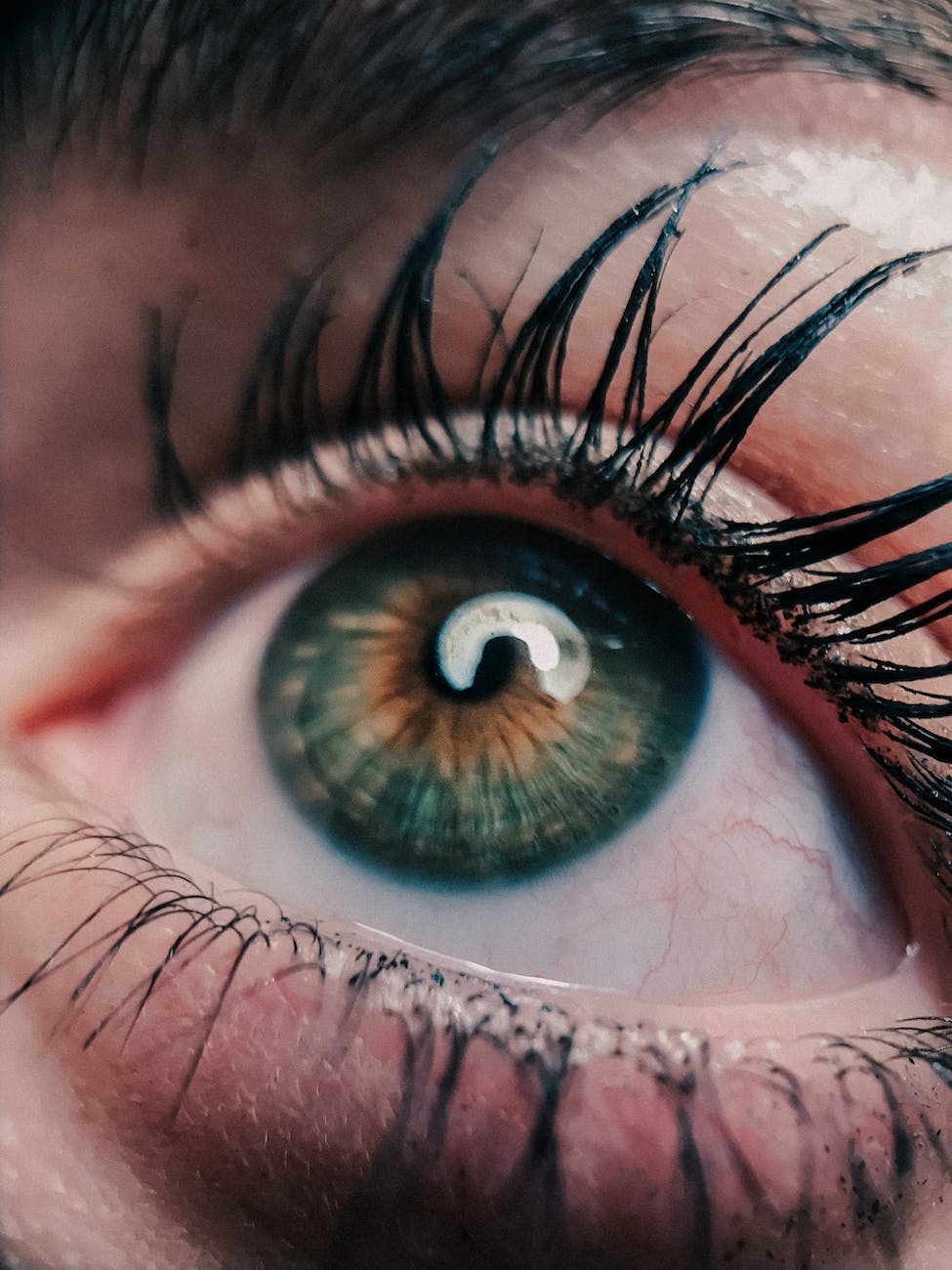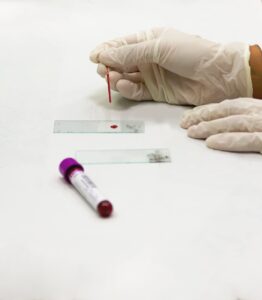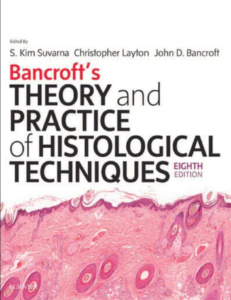The human eye is a complex and fascinating organ that serves as the body’s primary sensory input for visual perception. It works similarly to a camera, capturing light and translating it into the images we perceive, enabling us to interact with and interpret our environment.
The eye is comprised of several key structures, each contributing to the overall process of vision. The cornea and lens focus incoming light onto the retina, a layer of light-sensitive cells at the back of the eye. Here, the light is converted into electrical signals, which are then transmitted to the brain via the optic nerve.
The eye is also equipped with several automatic mechanisms to optimize visual perception. For example, the iris adjusts the size of the pupil to control the amount of light entering the eye, while the ciliary muscles adjust the lens’s shape to focus on objects at various distances, a process known as accommodation.
Furthermore, the eye also contains special types of photoreceptor cells – rods and cones, which are responsible for detecting light intensity (for black and white vision)
Eye Annual
Eye Annual 2020
This document provides a comprehensive overview of the developments, research, and breakthroughs in ophthalmology for the year 2020. It aims to summarize the significant advancements and trends in eye care and vision science for that year.
Eye Annual 2021
The 2021 edition of the annual eye report offers an updated review of the year’s notable developments and breakthroughs in ophthalmology. This document serves as a reference for the most recent advancements and trends in eye care and vision science.
Optha Annual 2016
This is an annual summary document from 2016, providing a comprehensive review of the year’s developments in ophthalmology. It details advancements in research, treatments, and technology in the field of eye care for the year 2016.
Optha Annual 2017
The 2017 edition of the annual ophthalmology review covers the key developments, research, and breakthroughs in the field for that year. It aims to provide readers with the major advancements and trends in eye care that were identified in 2017.
Optha Annual 2018
This 2018 edition provides an exhaustive review of the year’s significant developments in ophthalmology. It includes breakthroughs in research, advancements in treatments, and emerging technology trends in the field of eye care.
Optha Annual 2019
The 2019 edition of the annual ophthalmology review document provides a detailed summary of that year’s developments, breakthroughs, and advancements in eye care. It serves as a valuable resource for those looking to understand the evolving landscape of ophthalmology in 2019.
Eye Class Test
Anatomy of Eye, Orbit and Eyelid 2017
This document provides a comprehensive exploration of the structure and function of the eye, orbit, and eyelid as of 2017. It aims to help readers better understand eye anatomy and its various interconnected components.
Cataract 2017
An in-depth investigation of cataracts in 2017. This file covers the causes, symptoms, treatment options, and preventive measures for this common eye condition, which is a leading cause of visual impairment worldwide.
Cataract 2018
A follow-up to the 2017 cataract report, this 2018 edition provides updated statistics, developments in treatment options, and the latest advancements in cataract surgery.
Cataract 2020
The most recent study of cataracts, this document focuses on the trends and developments in cataract diagnosis and treatment in 2020.
Cataract, Refractive Error, Pupil 2019
This comprehensive guide from 2019 covers cataracts, refractive errors, and the pupil. It provides detailed insights into these three interrelated topics, aiming to enhance the reader’s understanding of common eye conditions.
Cataract, Uveitis, Orbital Cellulitis 2014
An older resource that delves into three specific eye conditions: cataracts, uveitis, and orbital cellulitis. This document provides a solid understanding of these conditions, their symptoms, causes, and treatments as of 2014.
Cataract, Vitreous 2017
This resource from 2017 provides in-depth knowledge about cataracts and the vitreous, the clear gel that fills the space between the lens and the retina of the eyeball.
Class Test Eye 2020
This is a test or examination paper focusing on the anatomy and physiology of the eye, based on the 2020 curriculum.
Conjunctiva 2018
A dedicated document that provides in-depth knowledge about the conjunctiva, a thin transparent tissue covering the front part of the eye, as of 2018.
Cornea 2014
This 2014 edition focuses entirely on the cornea, providing readers with a detailed analysis of this critical component of the eye and its various diseases and conditions.
Cornea 2018
An update to the previous 2014 edition, this document discusses the latest developments in the field of corneal disease treatment and research as of 2018.
Cornea 2020
The most recent document providing comprehensive knowledge about the cornea, including new advancements, treatments, and the latest research in the field of corneal disease as of 2020.
Cornea and Orbit
A specialized resource that investigates the relationship between the cornea and the orbit, two essential components of the eye’s anatomy.
Exam MCQs 4th Year 2020
This document provides multiple-choice questions (MCQs) that are designed for a fourth-year examination in ophthalmology in 2020.
Eye ECQs Sendup 2020
A set of extended matching questions (EMQs) for a preliminary examination in ophthalmology, based on the 2020 curriculum.
Eye Lids, Vitreous, Optic Nerve, Visual Pathway 2016
This 2016 resource provides comprehensive knowledge about the eyelids, vitreous, optic nerve, and the visual pathway, crucial elements of the visual system.
Eye Module MCQs 2022
This document provides a collection of multiple-choice questions based on the eye module of 2022. It tests the learner’s understanding of various aspects of ocular anatomy, physiology, and pathology.
Eye Seq 1
This is potentially the first in a series of documents or modules that provide sequential learning about the eye’s structure and function.
Eyeball, Orbit, Conjunctiva, Episclera and Sclera 2016
This 2016 document provides comprehensive knowledge about the eyeball, orbit, conjunctiva, episclera, and sclera. These are crucial parts of the eye’s anatomy, each playing a unique role in vision.
Eyelids, Conjunctiva and Nasolacrimal Apparatus 2015
This 2015 document gives readers an in-depth understanding of the eyelids, conjunctiva, and the nasolacrimal apparatus, integral components of the ocular system.
Eyelids, Conjunctiva and Nasolacrimal 2017
An update from the previous document, this 2017 resource focuses on new advancements, treatments, and research concerning the eyelids, conjunctiva, and nasolacrimal system.
Eyelids, Conjunctiva, Cornea and Sclera MCQs
This file provides a series of multiple-choice questions (MCQs) testing knowledge on the eyelids, conjunctiva, cornea, and sclera, which are all vital components of the eye.
Glaucoma 2017
This 2017 document provides comprehensive knowledge about glaucoma, a severe eye condition that can lead to blindness if not diagnosed and treated early.
Glaucoma 2018
An update to the 2017 resource, this 2018 document covers the latest developments and advancements in glaucoma diagnosis, treatment, and research.
Glaucoma and Uveitis
A dedicated document discussing two major eye diseases: glaucoma and uveitis. It provides an in-depth understanding of these conditions, their symptoms, causes, and current treatment strategies.
Glaucoma, Retina 2016
This 2016 document offers comprehensive knowledge about glaucoma and the retina, including the interplay between these two areas and how diseases affecting them can be diagnosed and treated.
Glaucoma, Vitreous, Retina 2015
This resource from 2015 provides in-depth knowledge about glaucoma, the vitreous, and the retina. It aims to provide readers with an understanding of these crucial components of the eye and the diseases that can affect them.
Lacrimal, Orbit, Uvea MCQs
A document containing multiple-choice questions focused on the lacrimal system, the orbit, and the uvea. It is designed to test readers’ knowledge of these crucial parts of the eye’s anatomy.
Lens, Glaucoma, Retina MCQs
A set of multiple-choice questions focusing on the lens, glaucoma, and the retina. This resource is designed to test the understanding of these integral parts of the eye and the diseases that can affect them.
Lids, Lacrimal, Ref. Errors, Cornea 2016
This comprehensive 2016 document covers the eyelids, lacrimal system, refractive errors, and the cornea. It aims to enhance understanding of these parts of the eye and the common problems associated with them.
Lids, Orbit and Cataract 2015
This 2015 resource offers an in-depth look at the eyelids, the orbit, and cataracts. It provides a comprehensive understanding of these elements and the diseases that can affect them.
Mega Test 1, 2017
This document appears to be a comprehensive examination paper from 2017. It is likely to cover multiple topics related to eye anatomy, diseases, and treatment.
Miscellaneous
A document that might contain a variety of topics related to ophthalmology not covered in the other documents, or it may be a compilation of miscellaneous notes, research, or study materials.
Optic Nerve and Trauma 2018
This 2018 document provides detailed information on the optic nerve and various forms of ocular trauma. It explores the impact of injury on the optic nerve and the potential implications for vision.
Optic Nerve, Neuro-Ophthalmology, Strabismus MCQs
A collection of multiple-choice questions focused on the optic nerve, neuro-ophthalmology, and strabismus. It aims to test knowledge and understanding of these critical aspects of eye health and disease.
Orbit, Sclera, Cornea and Cataract 2015
This comprehensive 2015 resource covers the orbit, sclera, cornea, and cataracts. It provides a deep understanding of these parts of the eye and the common diseases that can affect them.
Orbita 2020
A 2020 document dedicated to providing comprehensive knowledge about the orbit (also known as ‘orbita’), the bony cavity that contains the eye, muscles, nerves, and blood vessels.
Refractive Error, Uveitis
This document delves into two specific eye conditions: refractive errors and uveitis. It provides a solid understanding of these conditions, their symptoms, causes, and treatments.
Retina 2018
A 2018 document that provides an in-depth look at the retina, a critical component of the eye responsible for converting light signals into neural signals that the brain can interpret.
Retina and Uveitis 2017
This 2017 resource covers the retina and uveitis, providing comprehensive information about these two crucial aspects of the eye, their associated conditions, and their treatments.
Retina, Ocular Injuries and Orbit 2017
This 2017 document provides comprehensive knowledge about the retina, ocular injuries, and the orbit. It aims to offer a deep understanding of these parts of the eye and the common diseases or injuries that can affect them.
Squint and Optic Nerve 2017
This 2017 document offers comprehensive information about squint (also known as strabismus), a condition in which the eyes do not align correctly, and the optic nerve, a crucial part of the visual system.
Uveitis 2018
This 2018 resource provides an in-depth exploration of uveitis, a form of eye inflammation that can cause significant eye problems, including blindness. It offers a comprehensive understanding of the condition, its causes, symptoms, and available treatments.
Eye OSPE
Eye Merged OSPE
This document likely represents a consolidated or merged set of Objective Structured Practical Examinations (OSPE) related to the eye. It could include diverse sets of practical skills assessments used in the study and practice of ophthalmology.
EYE OSPE 1
This could be the first in a series of Objective Structured Practical Examinations (OSPE) specifically focused on the eye. It is designed to assess students’ practical skills and knowledge in ophthalmology using a structured format.
OSPE EYE
This document is an Objective Structured Practical Examination (OSPE) specifically designed for the study of the eye. It aims to provide a comprehensive, practical, and structured assessment of learners’ skills and knowledge in ophthalmology.
Eye Sendup
Eye Send Ups and Proff
This document probably contains revision or preparatory materials, often called “send ups,” related to eye or ophthalmology examinations, possibly also covering professional-level content (“proff”).
Eye Sendup 2021
This 2021 document likely provides a collection of revision materials or questions intended for practice ahead of an eye or ophthalmology examination.
Eye Sendup MCQs 2020
This 2020 document consists of multiple-choice questions (MCQs) used as practice or revision materials for an upcoming ophthalmology examination. It focuses on various eye-related topics and disorders.
Optha Sendup 2014
This 2014 document likely contains revision materials for an ophthalmology examination. These “sendup” materials often help students prepare for examinations by providing practice questions or summarizing key topics.
Optha Sendup 2016 MCQs and SEQs
This 2016 document contains multiple-choice questions (MCQs) and short essay questions (SEQs) for revision ahead of an ophthalmology examination. It provides a comprehensive review of various topics in ophthalmology.
Optha Sendup 2018
This 2018 document likely provides a collection of revision materials or questions intended for practice before an ophthalmology examination. It likely covers various topics and disorders related to the eye.
Optha Sendup 2019 MCQs
This 2019 document provides multiple-choice questions (MCQs) designed for revision or practice before an ophthalmology examination. It gives an opportunity to test knowledge on various eye-related topics and conditions.
Optha Sendup 2019 SEQs
This 2019 document contains short essay questions (SEQs) used for practice and revision in preparation for an ophthalmology examination. These questions require detailed responses and help to test a deeper understanding of ophthalmology topics.




Pingback: 4TH YEAR MBBS (ANMC) - Acha Waqat